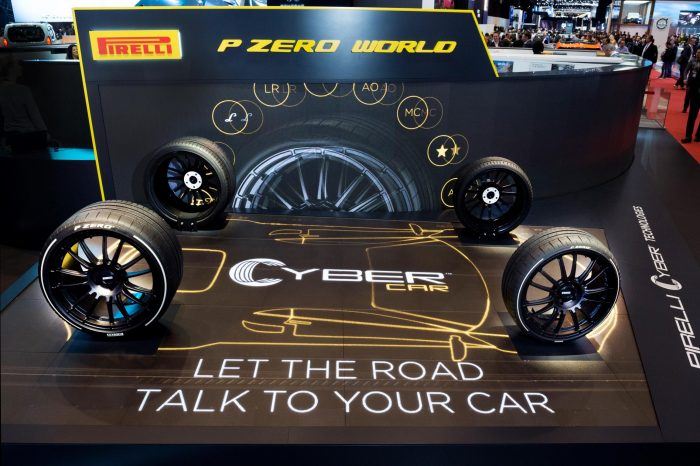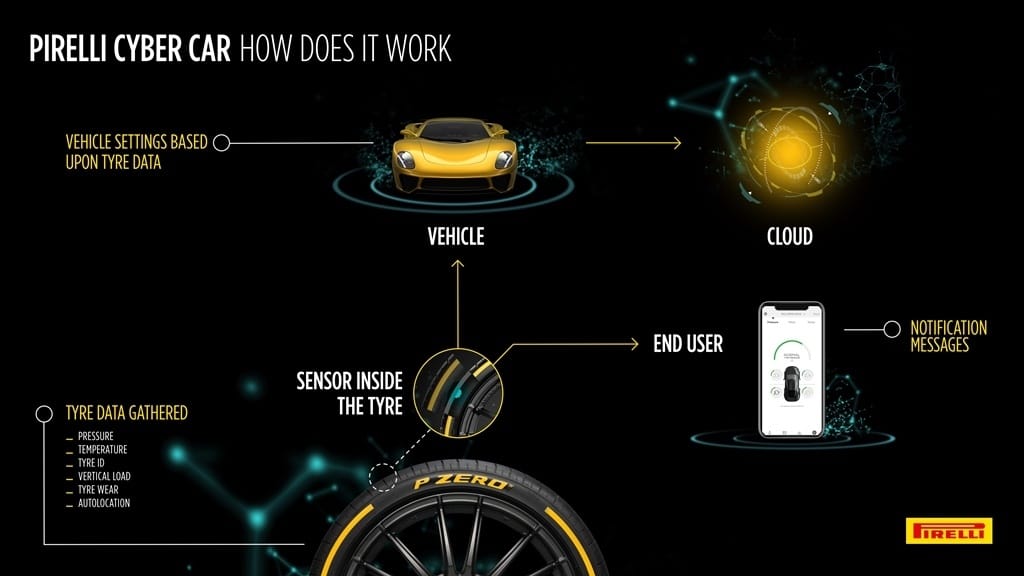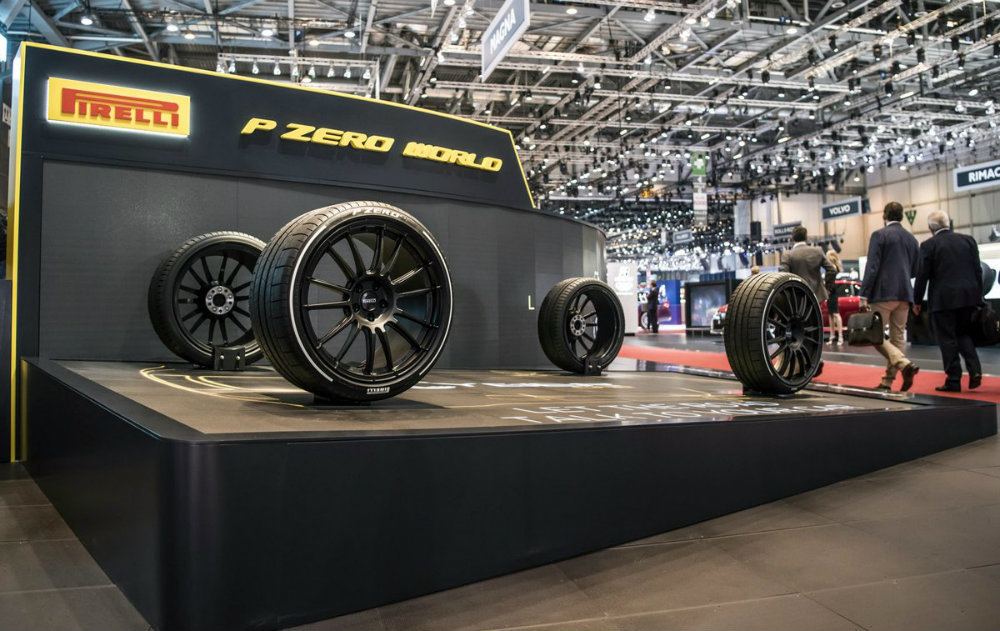Pirelli unveiled something interesting at the 88th Geneva International Motor Show. This is a product with a pretty irritating name that is actually on the verge of being totally cool. The “Cyber Car” and what it does, and is potentially capable of doing, could be monumental in terms of applied data analytics. Essentially what Cyber Car does is apply big data to your tires, thereby allowing you to use that data to optimize performance.
“Hang on a sec,” you ask, “don’t we do this already?”
Data Linguistics
Why yes, car manufacturers do this already, using sensors placed throughout the vehicle and all the internal computers – throttle position sensors, slip angles, amounts of slip in the electronically-controlled diff, wheel spin indicators – to get a holistic picture of what you are asking the car versus what the car is actually doing moment to moment, and then, doing its best to make the driver’s wish come true.
So what’s new here? To answer that, answer this: What’s missing in all the current data acquisition systems? Tires. Tire information is what is missing. Sure, most modern cars have TPMS systems (tire pressure monitor), but what Pirelli has gone and done is put a number of sensors inside the tires themselves. And then they’ve come up with a common data language for the information the tires are generating, moment to moment, while on the move. From there, they seamlessly integrate that data with all the car’s other streams of data into a single, functioning whole.
So what? So there’s sensors inside the tire. What’s the big deal?

Information Critical
A tire-embedded sensor can now be fully integrated into existing driver aids to improve performance and efficiency. If you can scoop up tons and tons of data concerning what your tires are going through – and remember, it all comes down to your tires eventually – then transmit that key data to the vehicle, your car can activate systems such as ABS and stability control. The vehicle can alter its setup on the fly for a safer, more comfortable drive, or, if you are at the track, alter the setup to maintain performance.
By accurately mapping the car’s weight, the vehicle’s central control unit can calculate precisely how many miles can be driven before recharging in an EV, for example. Monitoring temperatures from one tire to the next can more fully inform the traction control computer about possible road conditions, corner to corner (e.g. one corner could be colder and therefore prone to breaking traction).
Cyber Car informs the car’s computers about the tire’s vertical load, temperature, and pressure through the automaker’s factory interface, allowing timely intervention if the pressures go all skewwhiff. Tire maintenance becomes easier, thanks to feedback on tread wear and how tires should be seasonally rotated. Pirelli says the Cyber Car can even go so far as to offer bespoke services, such as valet and roadside assistance.

(Not) Running On Empty
Think of it this way: What if you could analyze the blood gasses of a long distance runner in the middle of an Olympic event? Further, what if you could grab that data, say blood/oxygen levels, and provide that data through a Fit Bit wearable thing and also a Bluetooth earpiece? What if a runner could know, at a glance, that she’s got a lot of oxygen capacity left, so now’s the time to push that final lap kick a few hundred meters early. Get it?
The primary focus for various digital companies is gathering and manipulating and analyzing data. Amazon suggests products to you, and they’re right 95 percent of the time. Google can search for you and get the correct results at the top of the list. Car companies have been doing this already in certain, almost traditional ways.
Look at Ferrari’s E-Diff differential system. First developed in their Grand Prix cars, the E-Diff uses computers and incoming data streams for differential torque deployment to help the car turn more. And things like this can also be found in traction control systems, all-wheel drive architectures, ABS-as-supplementary-traction-control, and such. Cyber Car just takes that digitalization into a new era.
Future Applications
And the fact that Pirelli has made the data scheme a standard platform, it can be a literal plug-and-play situation, like getting a car with Apple CarPlay or Android Auto. It won’t matter if you don’t own an iPhone. When you do, the car’s infotainment system will be ready for it. The new Pirelli Cyber Car system will be on the market by the end of the year. What you do with it will be up to you, your lap times at the track, and your insurance agent.
Tony Borroz has spent his entire life racing antique and sports cars. He is the author of Bricks & Bones: The Endearing Legacy and Nitty-Gritty Phenomenon of The Indy 500, available in paperback or Kindle format. Follow his work on Twitter: @TonyBorroz.
Photos & Source: Pirelli.


